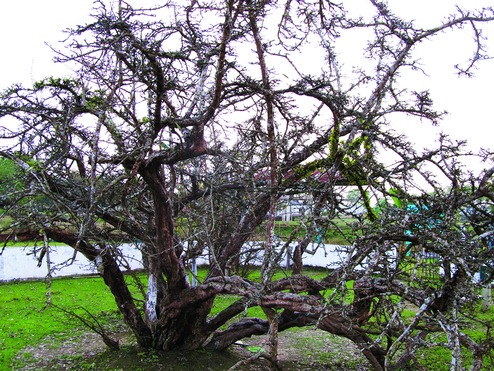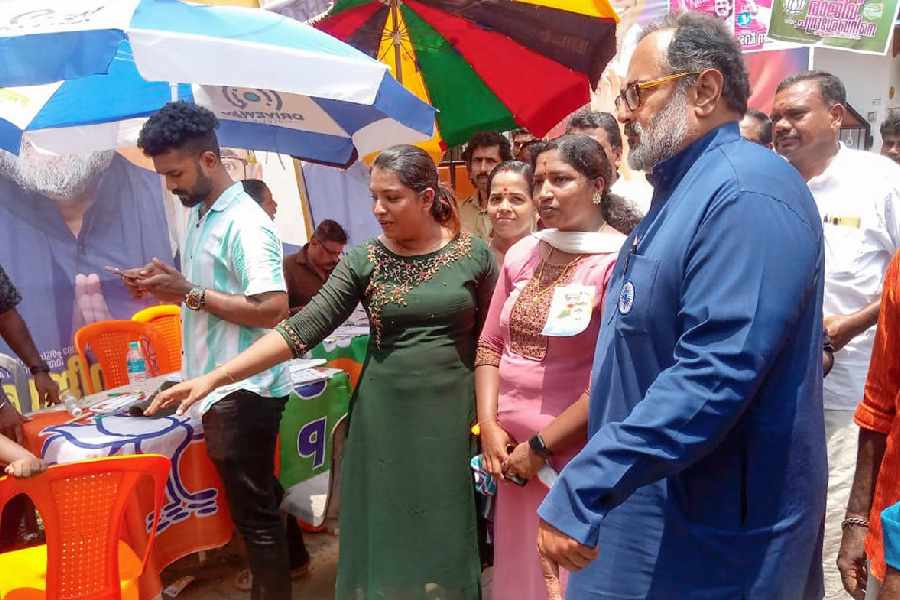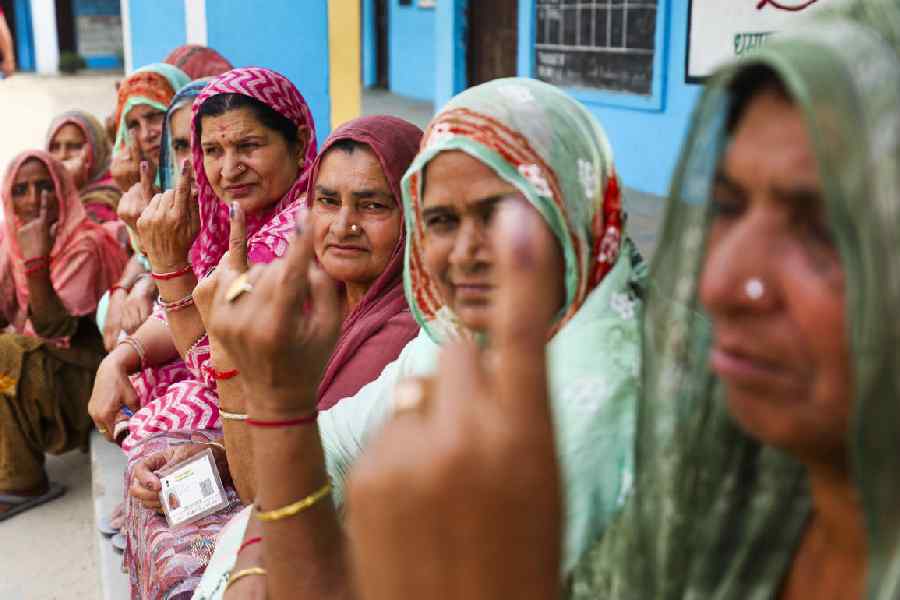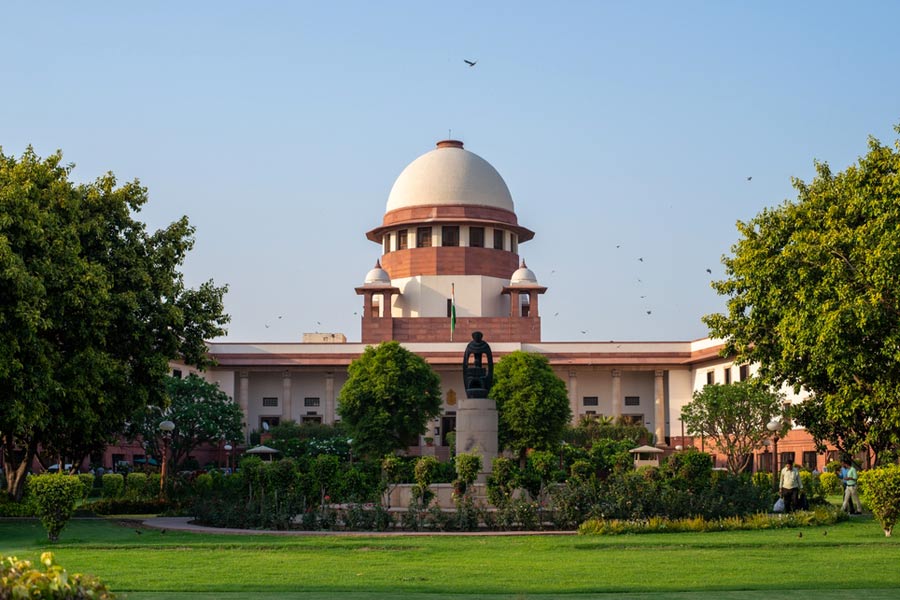

Everyone in Upper Assam knows of the Bakhar Bengena. Everyone knows that if you want to ensure the long life of a near and dear one, you must supplicate before it. After all, the Bakhar Bengena itself has been blessed with long years - 584 to be precise.
And this is no tall tale. A team from Lucknow's Birbal Sahni Institute of Palaeosciences (BSIP) arrived at this conclusion after an analysis of sedimentary soil on which the tree stands using carbon dating technique, BSIP scientist Anupam Sharma assures us.
There are many old trees in India, but the Bakhar Bengena is unique in that it cannot be found anywhere else in the country. Inamul Hussain, professor of Botany at Sivasagar Girls College, tells The Telegraph, "The flower of the tree produces seed. But these do not germinate. The tree has lost its capacity to reproduce."
We drove down from Sivasagar town last month to see the unique tree. After about 20 kilometres down the Sivasagar-Sonari Highway, we took a left turn, crossed the bridge across river Dishang, and entered Bokota mouza.
Bakhar Bengena is surrounded by jungles and was once the den of the separatist outfit, United Liberation Front of Assam or Ulfa. Most of the youth of this area joined the Ulfa in the Eighties and Nineties. After a few kilometres, the pucca road trailed off. There on, we took the no-road, which is actually the embankment of the Dishang, to reach Bakhar Bengena.
The village, the post office, the high school - everything is called Bakhar Bengena after the tree.
The tree stands between two villages - Jarlating and Chuhung-Muhung. And there it stood, a gnarled old thing, about 30 feet high, all branches and next to no leaves. In peak summer, it comes to be covered by hundreds of small white blossoms.
Outside of this region, no one knew much about the tree till 1939 when Tamil botanist U.N. Kanchilan discovered it. Only the myths abounded. Kachilan gave it its scientific name - Randia ulignonsa. The botanical name - Tamilnadia uliginsa. In 1982, another botanist, V. Sivarajan, came here to study the Bakhar Bengena. He told the local people and government officials that here was a rare tree and called it Catunaregam Uliginosa Sivarajan, after himself. But neither Kanchilan nor Sivarajan said anything about the age of the tree.
From the Eighties onwards, the region came under the bloody grip of militancy and the rare tree was forgotten. And then in 2012, the research team from the Birbal Sahni Institute of Palaeosciences arrived. After two years of intensive work, the team revealed that the tree was 580 years old.
The BSIP's research outcome tied in nicely with the stories around the Bakhar Bengena. That sometime in 1400 AD, the Barahi king Mahamanikya of Jayantipur had planted this tree. At the time there was a business connection between China and Upper Assam. The sapling is believed to have been gifted to the king by the then Chinese emperor. This type of tree, to date, is found only along the banks of the Huang Ho river in China.
The second story is that at the time of the reign of the Ahom king, Chuhung Muhung - the same after whom the village takes its name - someone brought the plant from China. Yet another story goes that after a long-drawn battle between the Barahi king Mahamanikya and the king of Chutiya, when both sides decided to bury differences, Mahamanikya planted this tree. He announced that as long as the tree remained, the friendship between the two dynasties would be intact.
In recent years, post the discovery of its uniqueness, the local people and the panchayat have built a boundary wall around the tree. If you want to get closer to it, you have to pass through a gate. There is also a little canal surrounding it so that the base of the tree can be dry, even after heavy rains.
One of the old men of the village, Jiten Bora, says, "We have set up a committee for the preservation of this historical tree. Many people from different parts of India, as well as abroad come here to see the tree. But the government should take more initiative to preserve it."
That evening, we find a solitary flickering diya beneath the Bakhar Bengena. Someone's prayer for someone else's long life - blowing in the wind.










